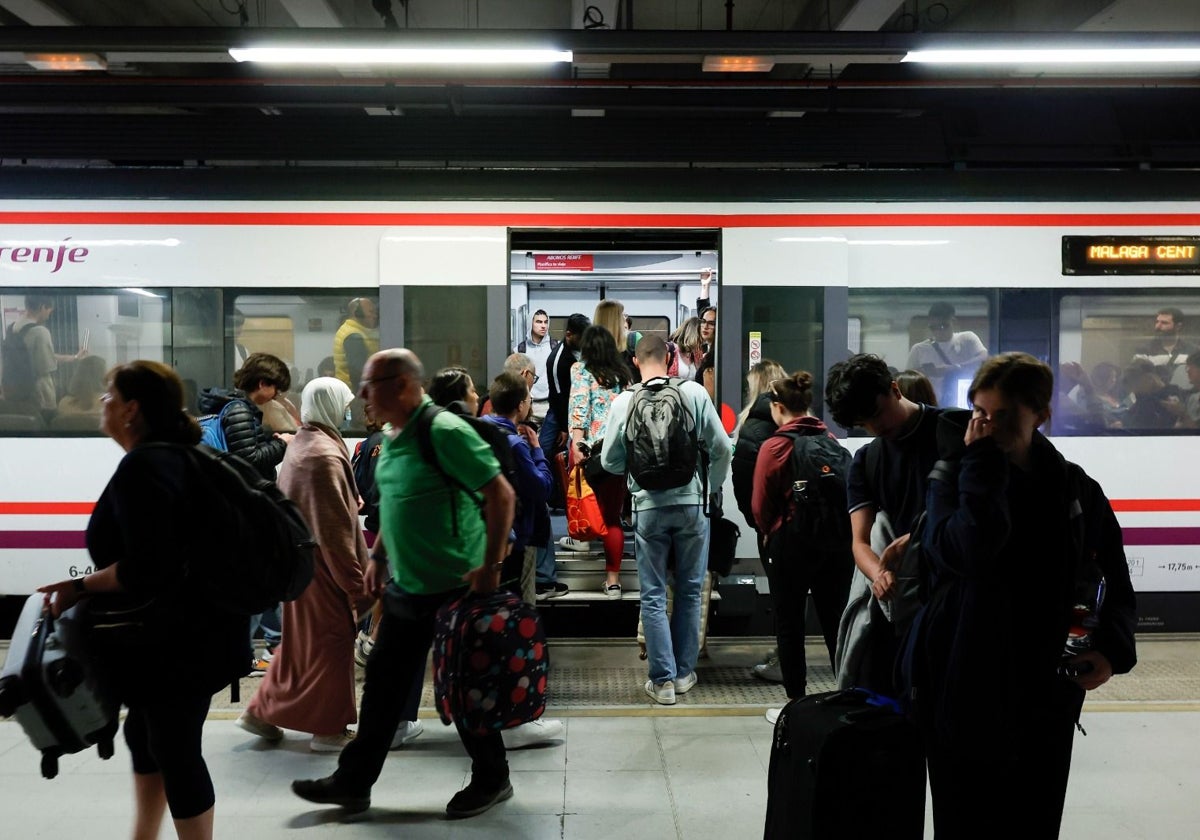Government considers plans to run Costa del Sol train line parallel to the A-7 motorway
The feasibility study, which will be put out to tender this month, will determine the best route in terms of cost and passenger numbers
Spain’s national ministry of transport announced last week that the feasibility study to connect the coast by train from Nerja to Algeciras will be put out to tender this month, following months of debate about the cost and benefit of a coastal train.
The project will have a drafting period of 18 months and a budget of 1.2 million euros. The results will not be known until at least the end of 2026. Depending on the results, an informative study will have to be carried out later, which will take at least another two years. After that, the projects of each section or phase in which the infrastructure will be subdivided, as well as the corresponding tenders and, finally, any construction work, would not start before 2030.
"We have to make the most of the A-7 corridor." That is the basic idea, the foundations that support the proposal for the future route, according to central government sources consulted by SUR.
However, the viability study will have to determine the best route in terms of investment and passenger numbers. The 195-kilometre corridor changes drastically in terms of existing urban development, availability of space, technical solutions, location of stations and demand.
The idea is for the railway to run as close as possible to the coast, which is where the majority of potential customers live. As such, running it along the AP-7 motorway, which is another option that has been considered, has been ruled out as it would be too far away from town centres.
Affected area
Like all main roads, the coastal motorway has areas that cannot be built on as established by law, where uses are already limited. On state roads there has to be a strip of land left clear on both sides of the road with a fixed distance of 100 metres on motorways and dual carriageways.
This is the space which would be used to build a railway line at a relatively low cost, insofar as the platform could be built on the surface or partly underground, according to technical sources. The sections that have to be 100 percent tunnel, which are more expensive, will be reserved for what is strictly necessary, greatly reducing the general cost of the project.
Pros and cons
The proposal to take advantage of the land alongside the A-7 is not new, but has been contemplated in the debates on the coastal train for years. In fact, in the study carried out by Malaga consultancy ARCS on behalf of Malaga city hall and the provincial body, the Diputación de Málaga, sponsored by Unicaja, this idea is already included, especially for the stretch between La Cala de Mijas and the Costa del Sol hospital, which is almost 20 kilometres long.
However running alongside the A-7 is impossible along the entire route, nor is it a panacea, according to several engineers consulted by SUR. Although it would be cheaper, it would affect the operation of the dual carriageway and it is even possible that this would have to be modified in some sections.
Moreover, parts of the dual carriageway are not suitable for the railway due to bends in the road. For instance, a four-kilometre tunnel would have to be built for the section between Las Lagunas and La Cala de Mijas, as already proposed by the Junta back in 2009.
And then there is the key problem of how it would cross Malaga city, where the feasibility study will have to propose innovative solutions. On the other hand, from San Pedro Alcántara to Algeciras, on the west, and in the Axarquía, it would be easier as they are less built up. Instead the key is to put stations in places where there would be the most passenger demand.
The engineers consulted also point out that the use of tunnel boring machines as a construction technique is becoming increasingly economical, due to the growing availability of options on the market, and this would minimise the impact on the Costa del Sol as a tourist destination, which is a fundamental consideration that must be preserved throughout the project.
What type of train
The general secretary for sustainable mobility, Álvaro Fernández Heredia, revealed some key points at a meeting last week. To begin with, the proposal being considered is that of "a high-capacity rail system". On this basis, the extension of the Malaga to Fuengirola Cercanías local line, which was another of the options that has always been on the table, is ruled out in principle.
This also explains the references made by the minister to the improvement of the intermodal system as a whole - which depends above all on the regional government. And this requires measures within the regional transport plans including improvement of bus lines and park-and-ride facilities that serve as "feeders to the coastal train, allowing medium and long-distance journeys with high capacities".

